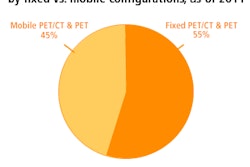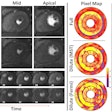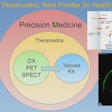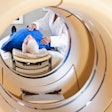Tuesday, November 29 | 3:00 p.m.-3:10 p.m. | SSJ19-01 | Room S505AB
A study from the University of California, San Diego (UCSD) has found fused FDG-PET/MRI to be more sensitive, specific, and accurate than MR spectroscopy in detecting the recurrence of primary and metastatic brain tumors in patients with a history of grade III or IV brain tumors."With new development of hybrid PET/MRI scanners, the combination of PET and MRI into a single system allows for simultaneous imaging and MRI-based motion correction of PET data," said presenter Dr. Ali Hosseini Rivandi, a radiology resident at UCSD. "This may furthermore improve the diagnostic accuracy of detection of primary or recurrent/residual brain tumors."
The retrospective study included 31 sets of fused FDG-PET/MR images and MR spectroscopy results for 23 patients (mean age, 52 years; range, 21-72). There were 19 patients with primary grade III and IV brain tumors, two with grade I and II brain tumors, and two with metastatic brain tumors.
All patients were previously treated with radiation therapy and/or surgery and were followed for a minimum of three months, with the absence or presence of tumor recurrence confirmed by biopsy and/or clinical status of the patient.
An analysis of the images showed that fused FDG-PET/MRI had sensitivity of 96%, specificity of 75%, and accuracy of 90%. MR spectroscopy achieved sensitivity of 73%, specificity of 20%, and accuracy of 55%.
"Early and more accurate detection of brain tumor recurrence or residual disease will optimize patient management and may also improve survival rates," Rivandi said. "Other studies have also demonstrated that the fused FDG-PET/MRI can be utilized to define the biopsy targets. Additionally, fused PET/MRI has been utilized successfully in treatment planning such as intensity-modulated radiation therapy."
Rivandi and colleagues hope to continue and expand their study with more subjects, as well as the use of different MRI techniques combined with PET to assess post-therapy changes.




















